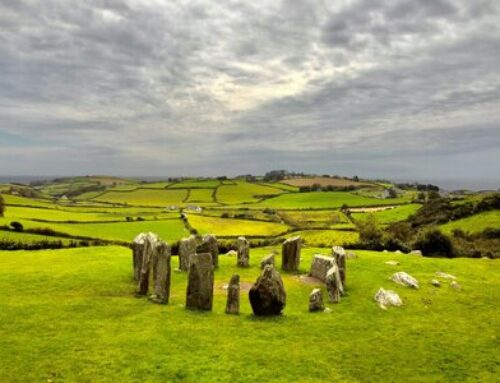The 17th annual Fiesta del Tambor takes place in March 2018! Professional percussionist Carol Steele is leading our AltruVistas tour to the festival. We sat down with Carol to get her rich, unique perspective on her life’s work and its deep intertwining with Cuban music and culture. You can learn more about the Fiesta here, and find Carol’s AltruVistas Journey itinerary below the interview.
Hi, Carol! Thanks for joining us today. Can you give readers some background on the Fiesta del Tambor?
 The Fiesta del Tambor happens every March and top Cuban percussionists, vocalists, and dancers will be there. You’ll see some of the top drum-focused groups, rumba groups, and folkloric groups in the country, and there’ll be jazz and popular music as well. In addition to the nightly concerts, the festival sponsors a percussion competition for Cuban youth, and open casino and rumba dance contests. There’s also a group called KoSa Cuba, which is a collaboration between Cuban and Canadian percussionists, and they lead percussion workshops on-site.
The Fiesta del Tambor happens every March and top Cuban percussionists, vocalists, and dancers will be there. You’ll see some of the top drum-focused groups, rumba groups, and folkloric groups in the country, and there’ll be jazz and popular music as well. In addition to the nightly concerts, the festival sponsors a percussion competition for Cuban youth, and open casino and rumba dance contests. There’s also a group called KoSa Cuba, which is a collaboration between Cuban and Canadian percussionists, and they lead percussion workshops on-site.
It’s truly an international festival, with invited drummers from other countries as well as Cuban groups. Mexican jazz drummer Antonio Sánchez from the Pat Metheny Group will be there, as will percussionists from England and Canada. The festival’s main location is at the Teatro Mella, but it spans across multiple Havana music venues.
Carol, you’ve been a professional musician since the ’70s, with a career spanning from New York to Cuba and beyond. What are some of the highlights of your career?
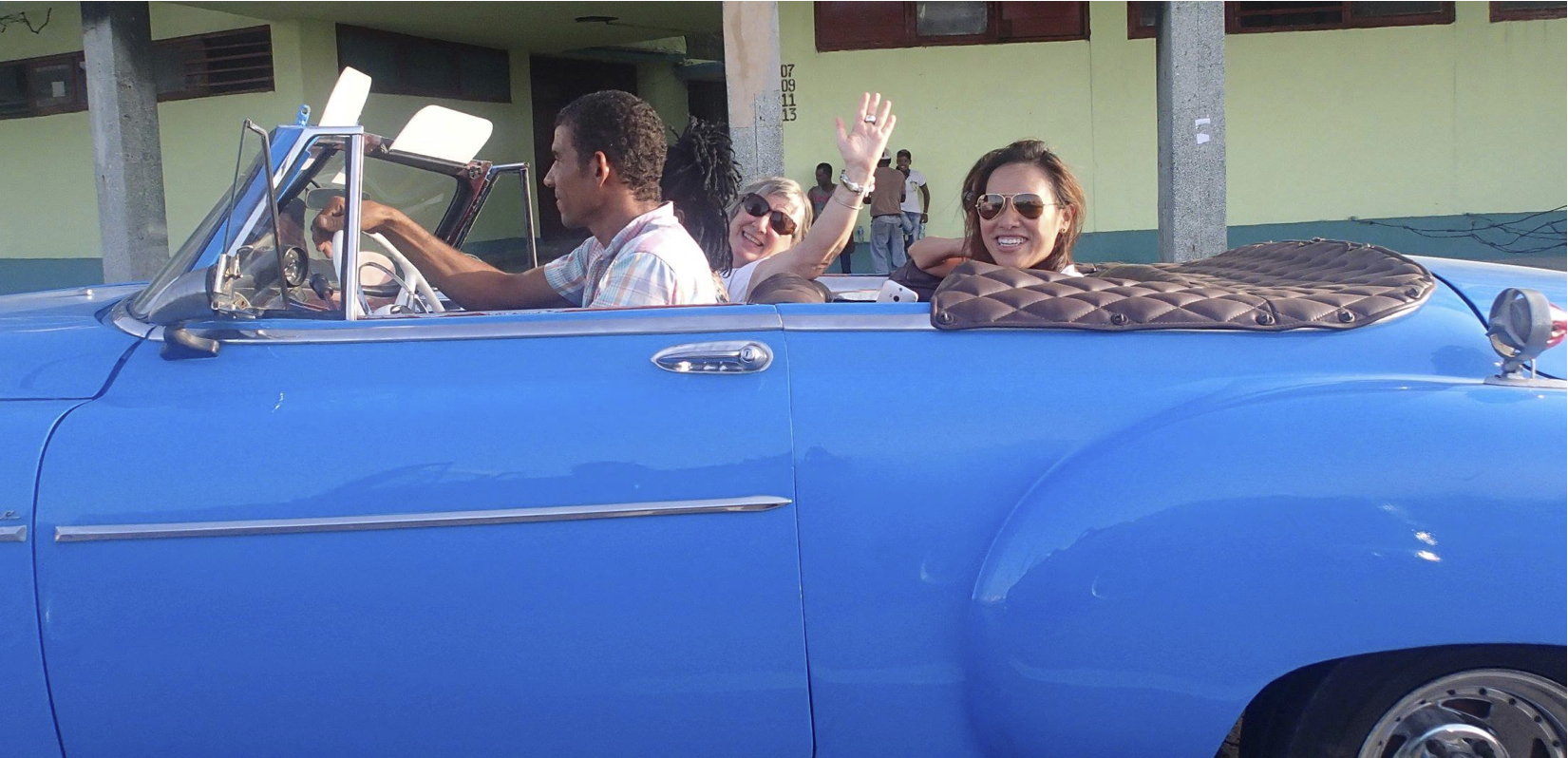 I worked as a professional percussionist in New York for over 30 years and played with hundreds and hundreds of people. I’d record an album with someone and then go out with them on a world tour. I’ve worked with Peter Gabriel, Tears for Fears, Eric Clapton, Jeffrey Osborne, Bette Midler, Joan Baez, and Diana Ross—among others—and I played all the percussion on Steve Winwood’s “Back in the High Life” and “Higher Love.” I also toured with jazz artist Angela Bofill, to name a few.
I worked as a professional percussionist in New York for over 30 years and played with hundreds and hundreds of people. I’d record an album with someone and then go out with them on a world tour. I’ve worked with Peter Gabriel, Tears for Fears, Eric Clapton, Jeffrey Osborne, Bette Midler, Joan Baez, and Diana Ross—among others—and I played all the percussion on Steve Winwood’s “Back in the High Life” and “Higher Love.” I also toured with jazz artist Angela Bofill, to name a few.
But what originally brought me to New York was my first professional gig, playing with AfroCuban jazz percussionist Mongo Santamaria. It was 1974 and I was 22. I’d started drumming as a senior in high school, and I became passionate about Cuban rhythms—I just felt a connection to them on a soul level, even though I was a white girl from San Francisco. Mongo was playing at the original Caesar’s club in North Beach and I went. In a “total cojones” move, I asked to sit in with him. He hired me on the spot. It was destiny.
So I went to New York with Mongo for about a year. The salsa scene was really popping off then. But I wasn’t ready for New York. After a year, I came back to the Bay and got myself together, made a game plan. A year later, in 1976, I went back.
I was playing in Latin bands and working in a percussion shop in the daytime. The shop owner kept telling me I could make money playing American music, and that it would support me to keep doing what I loved. “You need to cross over,” he said. When he passed away, I got a call almost immediately to go play with Diana Ross in Vegas at Caesar’s palace, sight unseen, in 1978. His spirit gave me the lift.
When did you start traveling to Cuba? How did you start leading tours, and how did you connect with AltruVistas?
 I started going to Cuba in 1987. I’d been self-taught in Cuban studies and folklore, and I started doing mom and pop trips—I’d dream up something I’d like to do myself, and find people to do it with me. I mostly set up Afro-Cuban drumming/dancing/singing events in Matanzas. Matanzas is a Cuban city that is a seat of folklore and rumba. The way I like to explain Matanzas is that it’s kind of like the New Orleans of Cuba. By this I mean that if you’re interested in jazz in America, you’ll find the historic, classic forms in New York, but if you like your jazz funky, you’ll find more of that in New Orleans. So while Havana may be like the “New York” of Cuba, Matanzas is the “New Orleans.” We’ll also be traveling to Matanzas on this AltruVistas trip, in addition to going to the festival in Havana.
I started going to Cuba in 1987. I’d been self-taught in Cuban studies and folklore, and I started doing mom and pop trips—I’d dream up something I’d like to do myself, and find people to do it with me. I mostly set up Afro-Cuban drumming/dancing/singing events in Matanzas. Matanzas is a Cuban city that is a seat of folklore and rumba. The way I like to explain Matanzas is that it’s kind of like the New Orleans of Cuba. By this I mean that if you’re interested in jazz in America, you’ll find the historic, classic forms in New York, but if you like your jazz funky, you’ll find more of that in New Orleans. So while Havana may be like the “New York” of Cuba, Matanzas is the “New Orleans.” We’ll also be traveling to Matanzas on this AltruVistas trip, in addition to going to the festival in Havana.
What has always been key for me in leading my trips is that I could connect regular Americans with the deepest Cubanos. My original tours were so homespun. I met Malia in the late ’90s through a mutual friend here in the Bay Area. I saw the sociopolitical angle she has with her tours, and knew it would mesh well with my folkloric music angle. I moved back to the Bay Area in 2003 and started doing trips with Malia in 2007 when she was still with Global Exchange. Since then, in addition to working with AltruVistas, I’ve partnered with other organizations including National Geographic Expeditions, as well as continued to do my own trips.
You’ve been initiated into Santeria. What are you able to share with us about that process?
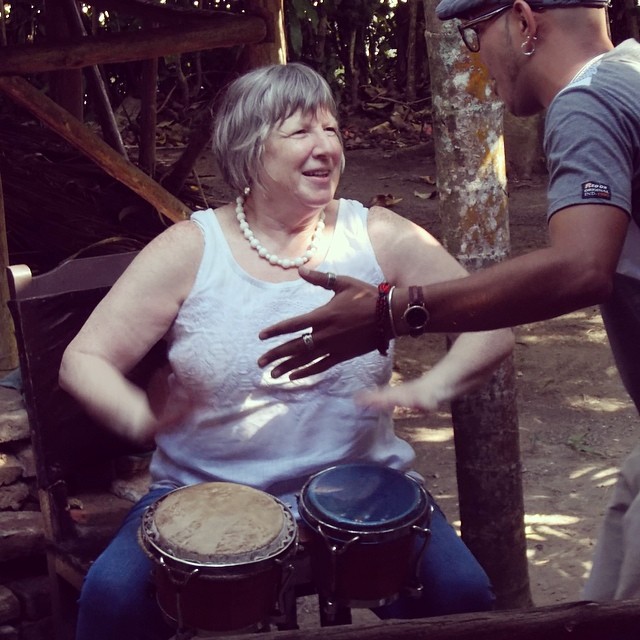 I first got involved in Santeria in New York. The majority of the really great drummers I admired in New York were involved in it—so I thought there might be something there for me. Santeria is descended from the Yoruba religion in Nigeria, and its divinatory readings, proverbs, songs, and folklore are about the Orishas—deities that are equated with forces of nature, like the ocean, the mountains. With each force of nature there’s also an essence—it’s about energy. Drums are integral to every ceremony, every celebration in Santeria. The singer controls the room by tuning in to the energies and the drummers follow. With each song there’s a rhythm. There’s the Batá, which is a religious drum for ceremony, which women traditionally aren’t allowed to play. Now women do play—we might see a women’s group while we’re in Cuba—but they play for show. Women still don’t play for ceremony in religious parties.
I first got involved in Santeria in New York. The majority of the really great drummers I admired in New York were involved in it—so I thought there might be something there for me. Santeria is descended from the Yoruba religion in Nigeria, and its divinatory readings, proverbs, songs, and folklore are about the Orishas—deities that are equated with forces of nature, like the ocean, the mountains. With each force of nature there’s also an essence—it’s about energy. Drums are integral to every ceremony, every celebration in Santeria. The singer controls the room by tuning in to the energies and the drummers follow. With each song there’s a rhythm. There’s the Batá, which is a religious drum for ceremony, which women traditionally aren’t allowed to play. Now women do play—we might see a women’s group while we’re in Cuba—but they play for show. Women still don’t play for ceremony in religious parties.
I took initiation very seriously. A godfather of mine in New York gave me a reading that said one day I would be initiated, and that I’d be told when it was time. Given my Western background I really wanted to be patient and conscious about what I was doing. Eventually, in the year 2000, I was initiated in Matanzas.
Thank you so much, Carol, for sharing your inspiring life path story with us! Anything else you’d like to tell people about what you’ll bring to the Fiesta del Tambor journey?
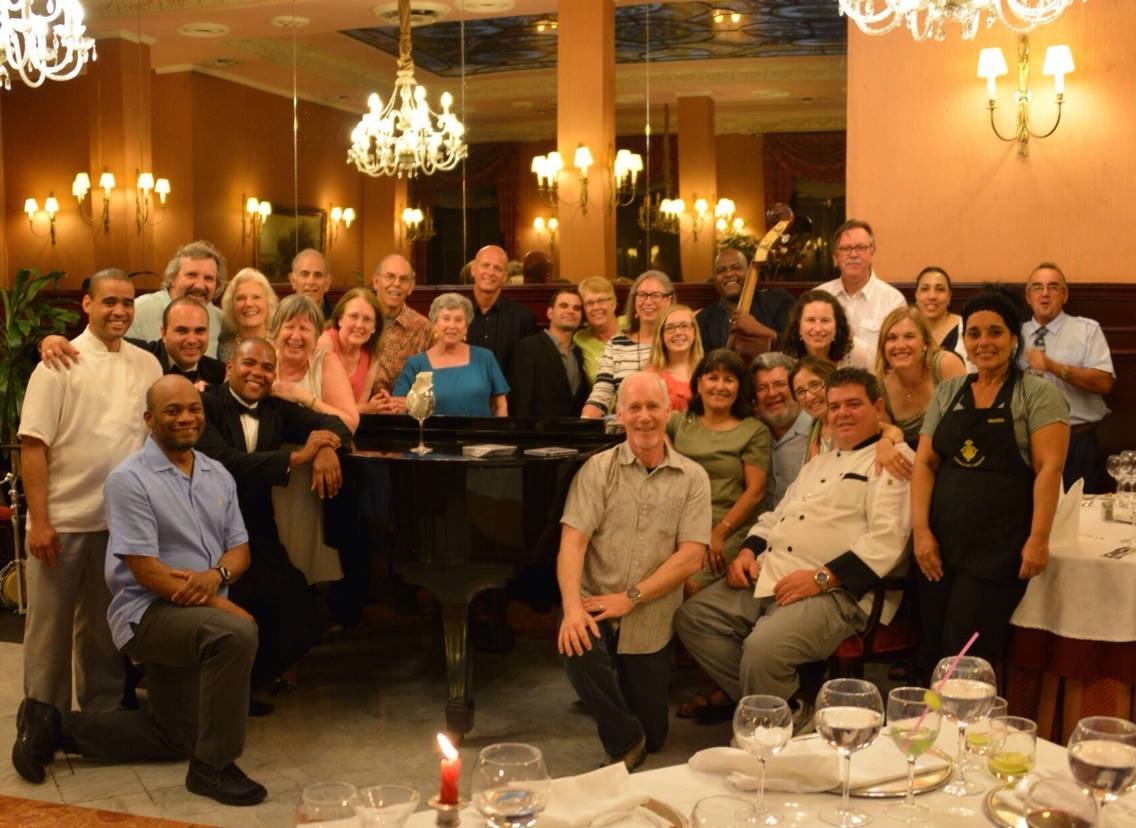 I have 30 years of experience traveling to Cuba for professional research & study. I know a ton about the history of Cuban music and I have personal and professional connections there. I’m definitely a storyteller so I’ll bring that aspect too. I love taking people to where they can learn from the source—in this case, it’s my community in Matanzas. We’re going to meet with the keepers of the flame of rumba, which is music and dance that came up in the docks. There’s debate about whether it was invented Havana or Matanzas. It’s Matanzas, obviously!—but we’ll see both. From Son to Timba, from Guaguanco to Rumba, and everything in between—Casino, Afro-Cuban folkloric drumming—we’ll be exposed to all of that during the course of the trip. I look forward!!
I have 30 years of experience traveling to Cuba for professional research & study. I know a ton about the history of Cuban music and I have personal and professional connections there. I’m definitely a storyteller so I’ll bring that aspect too. I love taking people to where they can learn from the source—in this case, it’s my community in Matanzas. We’re going to meet with the keepers of the flame of rumba, which is music and dance that came up in the docks. There’s debate about whether it was invented Havana or Matanzas. It’s Matanzas, obviously!—but we’ll see both. From Son to Timba, from Guaguanco to Rumba, and everything in between—Casino, Afro-Cuban folkloric drumming—we’ll be exposed to all of that during the course of the trip. I look forward!!
Cuba
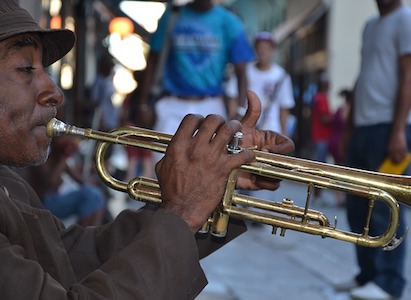
March 9-16
$2300 for casas particulares; $175 single room
Sponsoring Organization: Authentic Cultural Adventures
Availability: OPEN





